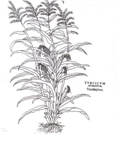Ver ítem
- xmlui.general.dspace_homeCentros Regionales y EEAsCentro Regional Buenos Aires NorteEEA PergaminoArtículos científicosxmlui.ArtifactBrowser.ItemViewer.trail
- Inicio
- Centros Regionales y EEAs
- Centro Regional Buenos Aires Norte
- EEA Pergamino
- Artículos científicos
- Ver ítem
Genetic variability within accessions of the B73 maize inbred line
Resumen
The maize inbred line B73 has been extensively studied at the molecular level. Researchers now have access to the genome sequence of B73 as well as to databases of biallelic and multiallelic markers where functional polymorphisms
between B73 and a public inbred line population can be compared to relate genotypes to phenotypes. This indicates the importance to determine the genetic fidelity of the germplasm during preservation and propagation processes,
[ver mas...]
The maize inbred line B73 has been extensively studied at the molecular level. Researchers now have access to the genome sequence of B73 as well as to databases of biallelic and multiallelic markers where functional polymorphisms
between B73 and a public inbred line population can be compared to relate genotypes to phenotypes. This indicates the importance to determine the genetic fidelity of the germplasm during preservation and propagation processes, in particular, when seeds of reference inbred lines such as B73 are maintained. The aim of this
study was to assess the genetic uniformity among three different sources of the B73 inbred line by means of 75 Simple Sequence Repeats (SSRs). The three B73 sources showed homozygosis; however, some accessions differed greatly from the expected locus size predicted at the reference B73 genomic sequence. A particular haplotype was prevalent in the USDA accession PI550473. The error rate of the allele size determination was estimated. The genotyping technique used in this work allowed the separation of alleles of ± 2 bp range difference within the same electrophoresis run, whereas allele size estimations between experiments, within the laboratory, differed in
± 4 bp range difference. Besides experimental errors in genotyping, the putative cause of differences among accessions could be attributed to seed contamination and genetic drift. The B73 accessions evaluated in our work can be shared among laboratories to precise genotyping and phenotyping of maize inbred lines.
[Cerrar]

Fuente
Maydica 59 (3-4) : 298-305. (2014)
Fecha
2014
ISSN
2279-8013
Formato
pdf
Tipo de documento
artículo
Palabras Claves
Derechos de acceso
Abierto
 Excepto donde se diga explicitamente, este item se publica bajo la siguiente descripción: Creative Commons Attribution-NonCommercial-ShareAlike 2.5 Unported (CC BY-NC-SA 2.5)
Excepto donde se diga explicitamente, este item se publica bajo la siguiente descripción: Creative Commons Attribution-NonCommercial-ShareAlike 2.5 Unported (CC BY-NC-SA 2.5)


